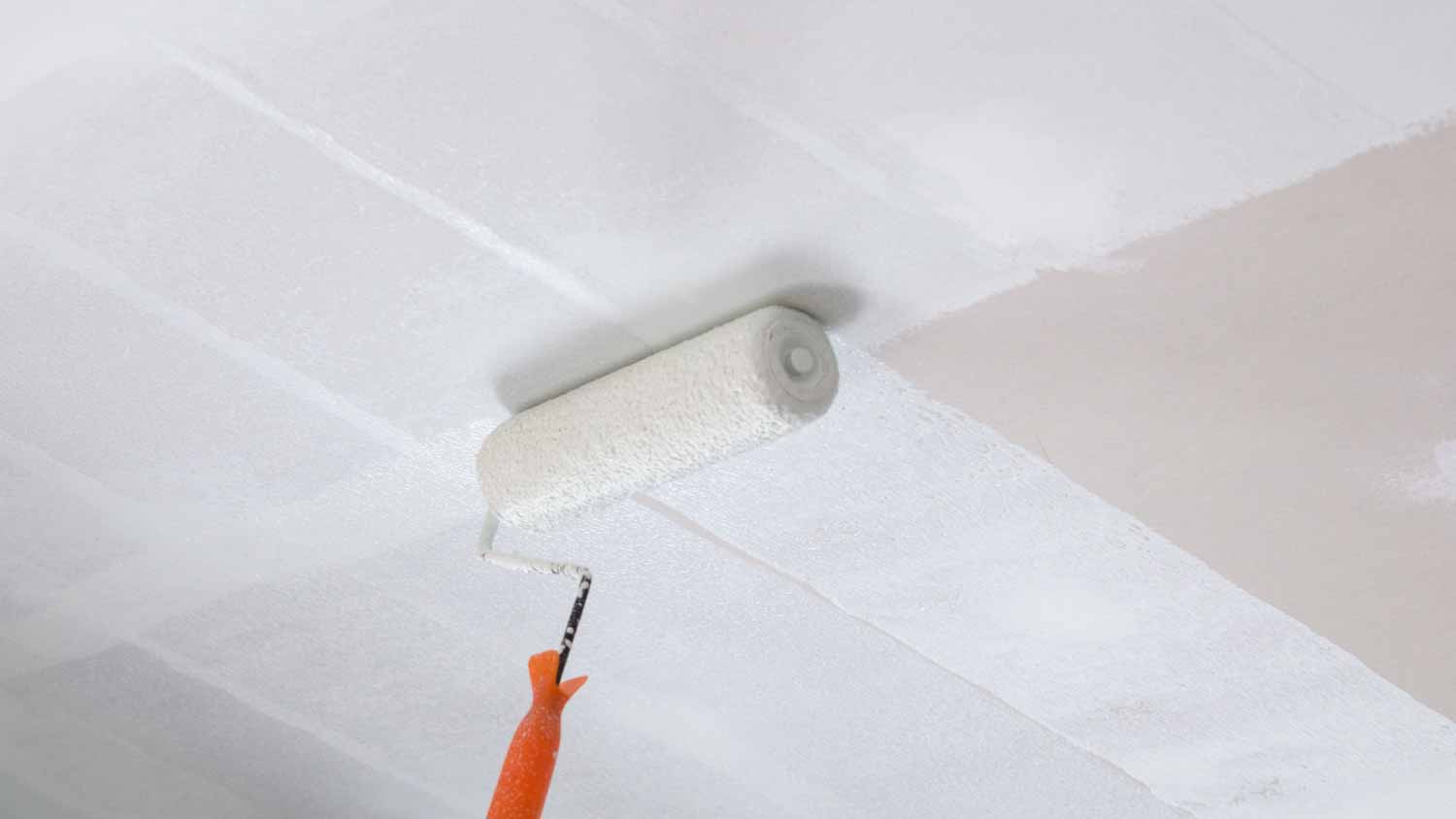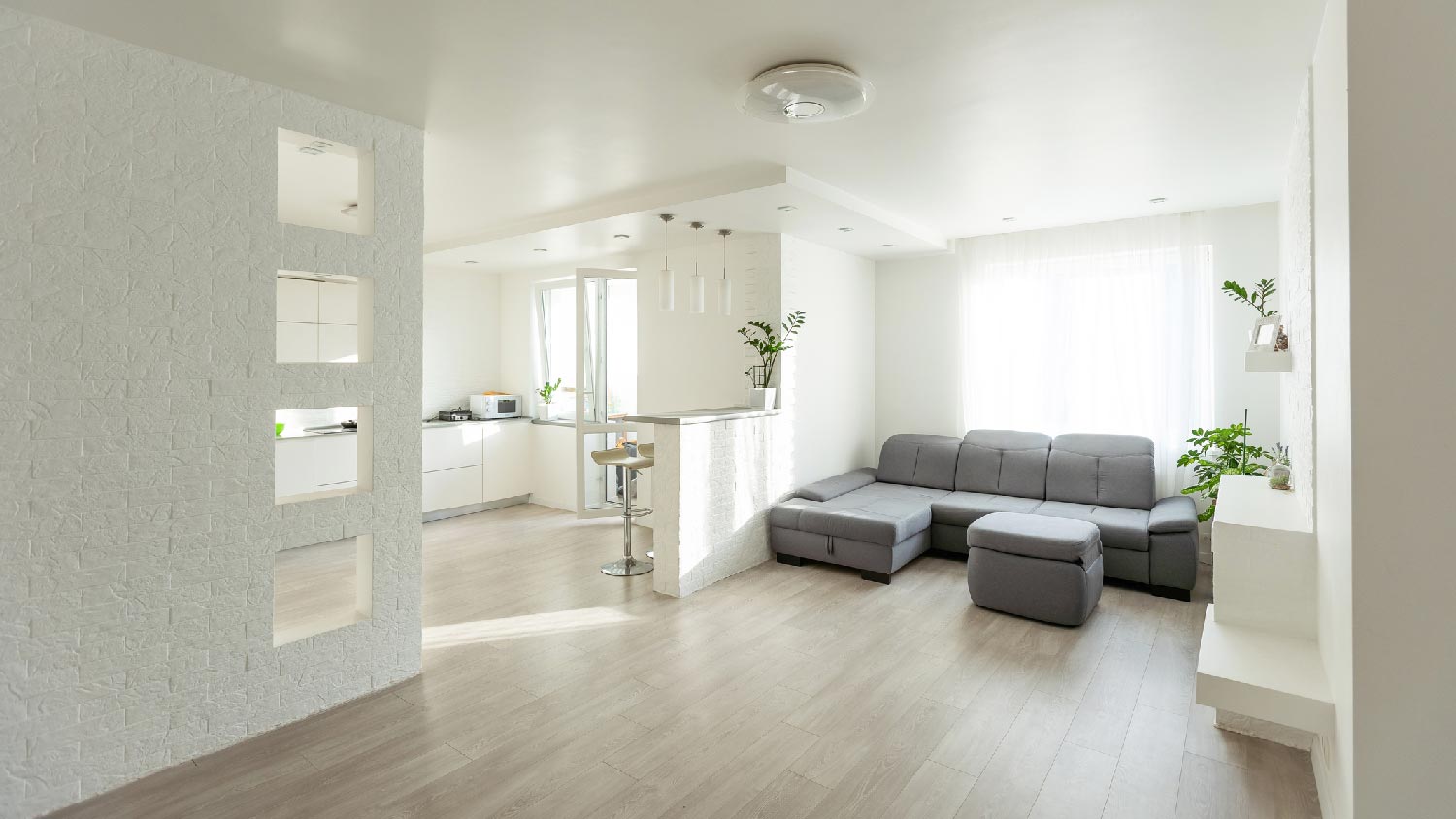
Drop ceilings are an affordable way to finish your room while maintaining access to utilities. Use this drop ceiling cost guide to estimate your project total.
Where DIY meets detective work


As a homeowner, knowing how to find ceiling joists lets you install new fixtures or hang a heavy object like a sculpture. Ceiling joists are essential structural elements that support the weight of the ceiling and anything that's attached to it. By finding these joists, you can ensure your installations are secure and stable while avoiding potential damage to your home.

Ceiling joists are horizontal structural elements that transfer the roof load to the vertical support system of a building. In short, they prevent the roof from caving in on itself. They’re installed after wall framing and are secured to the top of one wall and span to the opposite wall, evenly distributing weight.
If your ceiling has previously held a light fixture or ceiling fan, it was likely attached to a joist. Look for evidence of mounting hardware or electrical boxes to pinpoint joist locations easily.
Choose a method for locating joists based on your home's structure and the tools you have on hand. Accurately locating ceiling joists can take time, so approach this project with patience.
There are many stud finders, from pocket-sized magnetic models to models with indicator lights and modes for different building materials. Models that detect density offer the most accurate results for locating joists, but any stud finder can be helpful.
Clear the area by removing furniture or other obstacles blocking your ceiling access. Ensure you have adequate lighting to locate ceiling joists accurately. If using a ladder, ensure it's stable and securely positioned. Remember to follow all safety guidelines for ladder use to prevent accidents.
Ceiling joists run perpendicular to the direction of floor joists in the room above. If you have access to the attic or floor space above the ceiling, take note of the direction in which the floor joists are oriented.

Ensure you have a stud finder suitable for detecting wooden studs behind the ceiling surface. Some stud finders have specific modes or settings for this purpose. Turn on the stud finder and hold it against the ceiling surface. Follow any calibration instructions provided by the manufacturer to ensure accurate results.
Position the stud finder flat against the ceiling, ensuring it is parallel to the floor below. Hold it steady and level as you move it across the ceiling.
Slowly move the stud finder along the ceiling surface in a straight line, starting from one side of the room and working your way across. Keep the stud finder pressed firmly against the ceiling as you scan.
As you scan, the stud finder emits a signal or indicator when it detects a change in density that may indicate a ceiling joist. Pay attention to these signals and note the locations.
If you use a device with audio signals, the tone may intensify as you near a joist. Some stud finders feature visual indicators, like LED lights or digital displays, to signal the presence of a stud. These indicators may light up or change color when the stud finder detects a change in density corresponding to a ceiling joist.
Once you've identified the locations of the ceiling joists, make minor marks on the ceiling surface with a pencil or marker. This will help you track their location for future reference.
Scanning the ceiling multiple times from different angles and positions ensures accuracy. If the stud finder indicates the presence of multiple joists in close proximity, you may need to adjust your positioning or scanning technique to differentiate between them. Confirming the location of your ceiling joists before you begin your project helps to avoid costly ceiling repairs.
This simple method requires a good ear and paying close attention, but you only need a pencil, hammer, and nails.
Tap gently on the ceiling using your knuckles or carefully with a hammer. Listen for changes in sound. Places with no joist will create an echo or hollow sound. When you tap over a joist, the sound should be more solid.
When you’ve found the joist, lightly mark it with a pencil.
Drive test nails to identify the exact location of the joist. The nails will be more difficult to drive into the joist. Once you’ve reached the edge, the nails should easily break through the drywall.
Patch any leftover holes with putty or drywall compound. Alternatively, call a ceiling repair pro in your area to make it look like new.
In this method, once you’ve located one joist, you measure and mark to locate all of the other joists.
Locate one joist using one of the other methods, like tapping or using a stud finder.
Find the edge of this joist and measure ¾ inch toward the center of the joist. Mark this center point.
Measure 16 inches, the standard distance between joists, from the center mark, which should put you at the center of the next joist.
Test the location of the second joist by creating a test hole with a hammer and nail. If it’s not there, try measuring 24 inches from the previous joist, as sometimes this distance is used between joists.
Once you’ve identified the next joist, continue to measure precisely from center to center, checking that you’ve found it before proceeding.
Plaster ceilings are found in older homes and can be particularly challenging because stud finders and tapping don’t work. Additionally, older homes may or may not have even joist spacing.
Climb into the attic and measure and write down the distance from a side wall to the closest joist. Measure from the first joist to the second and third, writing down the measurements for each.
Starting at the same side wall, measure from the wall to the first joist location and mark it with a pencil.
To test the accuracy of the first joist location, make a test hole with a hammer and long nail or a drill with a ⅛-inch drill bit.
Repeat the joist measuring, transfer, and testing process until you’ve located all the necessary joists. This method involves some trial and error, but it will help you find the joists even if they’re unevenly spaced.
Whether you find ceiling joists or hire a local ceiling pro depends on your DIY expertise and comfort level. The project is relatively straightforward if you have home maintenance experience and are comfortable using a ladder. Finding ceiling joists yourself can save money and offer a valuable learning experience.
However, hiring a professional is advisable if you’re concerned about accuracy or safety. Professionals have the expertise, tools, and safety protocols to ensure accurate joist location. If you’re having work done on your ceiling or installing new electrical for light fixtures, the pro you hire will find the joists for you.
Repairman didn't have part to make repair but returned the next day (Saturday) with needed part and completed repair.
Bill, the owner of the company responded promptly upon requesting service by coming and assessing the situation. They returned the next day making the repairs. Changed their thinking on what they were going to do to make the repairs 3 times during the repair and spent the day going back and...
We actually have had 2 cars repaired in the last month with Pearson. They were so exceptional to work with on our 2013 fix & lounge (damage due to collision due to others drivers fault), we brought our 2014 Honda CRV to them for repair as well. Exceptional customer experience due to: 1)...
Went quickly, pro repaired a 2" PVC to copper downstairs. Done in an hour or less. Renter's hadn't reported the small leak, Backlund had been out the week before to camera the main line and auger the upstairs toilet. At that time, the eagle-eyed technician noticed a bucket behind the dryer...
Went great. The electrician they sent was nice and professional, and let me run through what I was thinking for placement. Our walls are lathe and plaster so I'd been a little worried about the install, but it looks great and I could tell from listening that he didn't do any damage to the...
Called the number and was immediately setup to have someone come and look at my stove. They arrived on time and ordered the parts for my stove. When parts arrived they came back and made the repairs fast and efficiently. Great experience and glad I have Service One.
Our garage door wouldn't work because one of the springs broke. I contacted Omaha Door based on the reviews on Angie's list. Called on Friday morning and repair man came out Saturday afternoon. The work took about an hour. The worker was very respectful and polite. He repaired the spring...
It took less than an hour to replace the cables with stainless steel cables that won't rust and repair and adjust the door.
From average costs to expert advice, get all the answers you need to get your job done.

Drop ceilings are an affordable way to finish your room while maintaining access to utilities. Use this drop ceiling cost guide to estimate your project total.

The cost of plastering walls and ceilings depends on the room size and ceiling height. Our tips can help you estimate an accurate cost.

Venetian plaster can add depth and texture to your aesthetic. Learn how much Venetian plaster costs based on factors like square footage and whether you hire a pro to help.

Learn how to figure drop ceiling grid and tile material for any room in your home using this calculator to minimize waste and maximize attractiveness.

Applying the right amount of mist coat extends the life of your paint. But how many times should you mist coat new plaster? Find out with this guide.

Find out what causes ceiling cracks, including general wear and tear, water damage, roof truss uplift, and issues with your foundation.